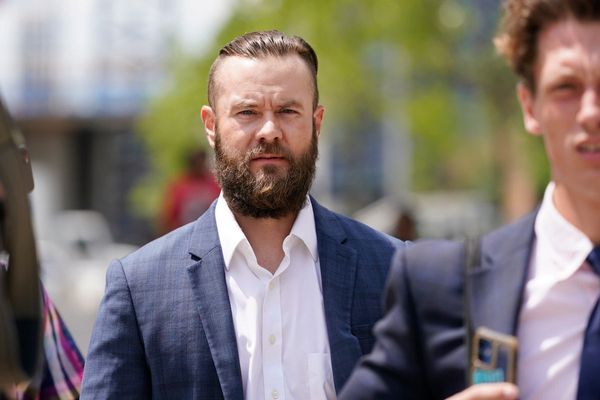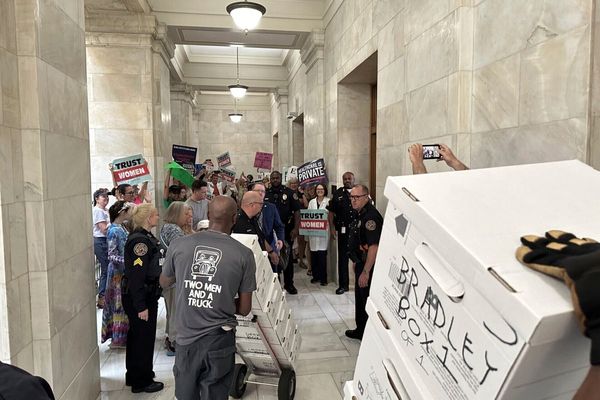
Since gaining independence from Belgium in 1960, the Democratic Republic of Congo has seen recurrent armed conflict, political tensions, regional power struggles and battles over its natural resources. RFI takes a look at the pivotal moments in the country's history and their connections with today's events.
July 1960: Mutiny of the Force Publique and Belgian intervention
The political and military crisis that erupted in the Democratic Republic of Congo (DRC) in July 1960, in the first month of its independence from former colonial power Belgium, had its origins in frustrations over the composition of Prime Minister Patrice Lumumba's government.
Two major political figures, Albert Kalonji, from the Kasai region in the centre of the country, and Jean Bolikango, hailing from the Equateur region in the north-west, found themselves sidelined, fuelling a feeling of exclusion among their supporters.
This contributed to discontent within the Congolese army, the Force Publique, whose soldiers, including those from the Kasai and Equateur regions, mutinied on 4 July, 1960.

This mutiny was also fuelled by the continuing presence of Belgian officers in the Congolese army after independence. Tensions rose, particularly when Belgian General Émile Janssens told soldiers gathered for a parade: "Independence changes nothing for the Force Publique, the situation remains the same as before."
Relations soured further when Belgian forces stationed in Kamina, in the former province of Katanga in the south-east of the DRC, and Kitona, in the province of Central Kongo in the south-east, intervened without the agreement of Lumumba, disarming Congolese soldiers on 10 July in Elisabethville (now Lubumbashi) in the south-east.
Belgium accused of colonial-era crimes against humanity in Congo
This Belgian interference also led to a breakdown in diplomatic relations between the DRC and Brussels, precipitating the mass departure of Belgian civil servants, teachers and judges from the country and exacerbating the institutional crisis.
July-August 1960: The Katanga and South Kasai secessions

The day after the mutiny, Katanga seceded under the leadership of Moïse Tshombe, an independence fighter and prime minister of the Congo-Kinshasa province from July 1964 to October 1965. This province, rich in mining resources, benefited from the support of the Haut-Katanga Mining Union and the Belgian military presence. The absence of a military response allowed Katanga to consolidate its autonomy.
This secession also marked the beginning of a series of crises linked to the control of natural resources in the region. A few weeks later, South Kasai followed suit. Kalonji proclaimed the independence of this region, which was home to major mining operations.
As in Katanga, the authority of the central government was challenged and weakened. The secession led to clashes between the Congolese army and separatist forces, and the ensuing war caused major population displacements.
November 1963: The Mulelist rebellion
In 1961, after Lumumba's assassination, the so-called Lovanium Conclave was organised to bring together DRC's political forces and form a government of national unity under the leadership of Cyrille Adoula.
Among the malcontents was Pierre Mulele, a fervent supporter of Lumumba's, who, after an exile in the Middle East, went to China for guerrilla training. Back home, he launched a rebellion in July 1963 in western Congo.
Meanwhile, in Brazzaville, exiled Lumumbists led by Christophe Gbenye set up the Conseil National de Libération ("National Liberation Council", CNL). Their aim was to open a second front in the east of the country. Laurent-Désiré Kabila and Gaston Soumialot were sent from Bujumbura, the capital of Burundi, to organise an armed insurrection there.
Angola flags desire to step down as mediator in eastern DRC conflict
The rebels also adopted Mulele-inspired warfare techniques – notably a belief in invulnerability to bullets, reinforced by mystico-religious practices and the use of psychotropic drugs.
Towns including Uvira, 120 kilometres from Bukavu, the capital of South Kivu in the east of the DRC, fell under rebel control, prompting the West to intervene. In November 1964, intensive bombardments were carried out against rebel positions, and the capture of expatriates was used as a pretext for organising a military operation.
On 24 November, Belgian paratroopers were dropped on Kisangani under the pretext of freeing foreign hostages. After the failure of the movement, its leaders went into exile – except Laurent-Désiré Kabila, who chose to stay in the east of the country. In 1967, he founded a small resistance group, the Parti de la révolution du peuple ("Party of the People's Revolution", PRP), which remained active for several decades and served as the basis for the movement that eventually brought him to power in 1997.

April 1965: Che Guevara in the Congo
Argentine Marxist revolutionary Ernesto "Che" Guevara wanted to extend his revolution to Africa, convinced that the movement should be universal. He envisaged extending this to several countries, including Mozambique, Angola and Congo-Brazzaville, but landed on the DRC after, as he called it, the CIA's brutal intervention in Kisangani. In his memoirs, he explained that this interference revealed the country's strategic importance in the fight against imperialism in Africa.
When he arrived in the DRC, the rebellion was already weakening. He tried to join Mulele, but without success. Eventually, he and around 100 Cuban fighters found refuge with Kabila, whose rebellion was still active.
"However, Kabila, supported by the USSR, was wary of Che Guevara, who had Chinese backing, because of the tensions between Moscow and Beijing," explains historian Isidore Ndaywel è Nziem, author of Histoire Générale du Congo: De l'héritage ancien à la République Démocratique ("General History of the Congo: From ancient heritage to the Democratic Republic").
In 1965, following a declaration by the Organisation of African Unity (which was succeeded by the African Union in 2002) calling for the departure of foreign mercenaries from Africa, Tanzania's President Julius Nyerere took the opportunity to expel the Cubans, preventing Guevara from continuing his fight in the Congo. He left Congolese territory in November 1965, just before Mobutu Sese Seko took power.
March 1977: The 80-day war

The 80-day war was a rebellion led by former Katangese gendarmes known as "Tigers", who had taken refuge in Angola after the failure of Katanga's secession in 1963. These fighters, initially supported by Tshombe when he became prime minister in 1964, found themselves marginalised after Mobutu's coup d'état in 1965.
They returned to Angola, where they fought in the war for independence alongside Agostinho Neto's Popular Movement for the Liberation of Angola (MPLA) against the pro-Western forces of the National Liberation Front of Angola and the National Union for the Total Independence of Angola, supported by Mobutu's Zairian troops.
Rwanda says cutting diplomatic ties with Belgium, as EU announces sanctions
When the MPLA took power in Angola in 1975, the presence of the Tigers became problematic. To avoid internal tensions, Neto proposed that the Tigers go to Zaire (as DRC was then known) to fight Mobutu. The Tigers founded the Congolese National Liberation Front, and in 1977 launched an offensive against Zaire, known as the 80-day war.
Led by Nathanaël Mbumba, the rebels invaded the Shaba region (formerly Katanga) and threatened to overthrow Mobutu. However, their advance was halted thanks to the intervention of Moroccan troops, who came to the aid of the Zairian armed forces.
May 1978: The Shaba war and the battle of Kolwezi
The Shaba war refers to the second attempt by the Katangese Tigers to reconquer Katanga (Shaba) in 1978, a year after the failure of the 80-day war in 1977. This time, the rebels, who had come from Zambia, succeeded in taking Kolwezi, a strategically important town because of its mining industry.

Faced with this threat, French President Valéry Giscard d'Estaing accepted Mobutu's request for help. He sent in the French Foreign Legion, which was dropped on Kolwezi as part of Operation Bonite, also known as Operation Leopard. This rapid intervention enabled them to regain control of the town and repel the attackers.
During this period, Kabila had approached Mbumba, leader of the rebel movement, about an alliance in this offensive, a request Mbumba refused. After the failure of the Shaba war, Kabila launched his own offensives in 1982 and 1983, known as the Moba wars, in the regions of Moba and Kalemie. However, these attempts ended in even greater failure than the previous offensives led by the Katangese Tigers.
May 1997: The fall of Mobutu
The overthrow of Mobutu in 1997 by the Alliance of Democratic Forces for the Liberation of Congo-Zaire (AFDL), led by Kabila, marked a turning point in the country's history. Supported by Rwanda and Uganda, this rebellion put an end to the era of Zaire and established the name Democratic Republic of Congo.
However, Kabila's accession to power quickly paved the way for new tensions, as the rebellion was based on multiple agendas. The first was that of Rwanda, which sought to eliminate the Rwandan Armed Forces, defeated after the 1994 genocide and taking refuge on Congolese territory.
"To justify its intervention beyond its borders, Kigali was using the AFDL as a Congolese cover, facilitated by the support of Tanzanian President Julius Nyerere, who had known Kabila for a long time," explains historian Isidore Ndaywel è Nziem.
Uganda: the quiet power in the eastern DRC conflict
The second agenda was Kabila's own. Dismissed from the Sovereign National Conference, organised to work on a new constitution for the country, in the 1990s due to doubts over his nationality, he harboured resentment towards the transition process. Believing that political dialogue would fail to topple Mobutu, he decided to seize power by force.
The third agenda was economic and commercial. "From the start of the rebellion, multinationals became involved in the conflict, negotiating mining contracts with Kabila in exchange for logistical support. This network facilitated the AFDL's strategic movements, particularly between Goma and Lubumbashi," says Isidore Ndaywel è Nziem.
However, these divergent interests ended up weakening Kabila once he came to power. On 17 May, 1997, in Lubumbashi, he proclaimed himself head of state, a decision not necessarily met with consensus among his allies.
1998: A war under Rwandan-Ugandan influence
In July 1998, the break between Kabila and his Rwandan allies marked another turning point. The president ordered the departure of Rwandan and Ugandan troops, a decision perceived as a betrayal by both Kigali and Kampala. This change of heart precipitated the escalation of the conflict, which now pitted Kabila, supported by Angola, Namibia and Zimbabwe, against the rebellions financed by his former sponsors. This strategic shift was accompanied by sovereignist rhetoric, summed up in Kabila's famous words: "Never betray the Congo."
It was against this backdrop that the Rally for Congolese Democracy (RCD) rebellion was born. Supported by Rwanda, the movement settled in Goma, from where it controlled a large part of eastern DRC. For several years, the RCD administered the region, establishing military control over the mining areas.
At the same time, another rebellion, the Movement for the Liberation of the Congo, led by Jean-Pierre Bemba and supported by Uganda, took control of the north of the DRC.
In 2002, following the signing of the Sun City agreement, the RCD and the MLC officially ended their armed struggle and became political parties.
2006: CNDP, the legacy of the RCD
In July 2006, former RCD cadres, dissatisfied with the Sun City accords and the military integration process, founded the National Congress for the Defence of the People (CNDP) under the leadership of Laurent Nkunda. Based in the Ruwenzori and Nyiragongo massifs in North Kivu, the CNDP expelled the Congolese administration from several territories.
Negotiations began at the Goma conference in 2008, but the CNDP refused to be treated as a mere armed group and demanded direct dialogue with the government, claiming that it represented a specific population within an ethno-political logic. An agreement was eventually signed on 23 March, 2009. The CNDP was transformed into a political party and its fighters integrated into the Congolese army.
Congo M23 rebels say they will withdraw from seized town to support peace push
2012-2013: M23, an offshoot of the CNDP
Despite the CNDP's official integration into the army, a rebel faction emerged in November 2012 under the name of the March 23 Movement (M23), led by Sultani Makenga and supported by Rwanda and Uganda, according to UN reports. This new rebellion accused Kinshasa of failing to respect the agreements of 23 March, 2009.

On 20 November, 2012, the M23 took the town of Goma, but faced with pressure from the international community, agreed to withdraw after signing the agreements of 22 February, 2013, which provide for the creation of a national monitoring mechanism to ensure the government's commitments are implemented.
2021 to the present day: A new geopolitical context
The M23 resurfaced in 2021 and has since seized swathes of territory in eastern DRC on the border with Rwanda.
The rebel group is supported by approximately 4,000 Rwandan soldiers, according to UN experts.
In 2023, it joined the Congo River Alliance (Alliance Fleuve Congo - AFC in French), a political-military alliance lead by former Independent National Electoral Commission President Corneille Nangaa.
A lightning offensive in recent weeks has seen the M23 capture the North-Kivu capital of Goma, and Bukavu, the main city in the neighbouring province of South Kivu.
Tshisekedi and Kagame meet in Qatar for crisis talks on eastern DRC
Half a dozen ceasefires and truces have been brokered, and then broken.
A meeting between the Congolese government and the M23 in the Angolan capital Luanda last week was cancelled at the last minute.
On the same day, DRC President Felix Tshisekedi and his Rwandan counterpart Paul Kagame "reaffirmed their commitment to an immediate and unconditional ceasefire" after a surprise meeting in Doha organised by Qatar.
These successive rebellions illustrate a recurring pattern in the DRC, where armed groups, initially supported by foreign powers, end up fragmenting and re-emerging in different forms.
Each cycle is marked by a combination of military, economic and political agendas, with control of mineral resources, regional rivalries and internal tensions playing a central role.
This article has been adapted from the original in French.







